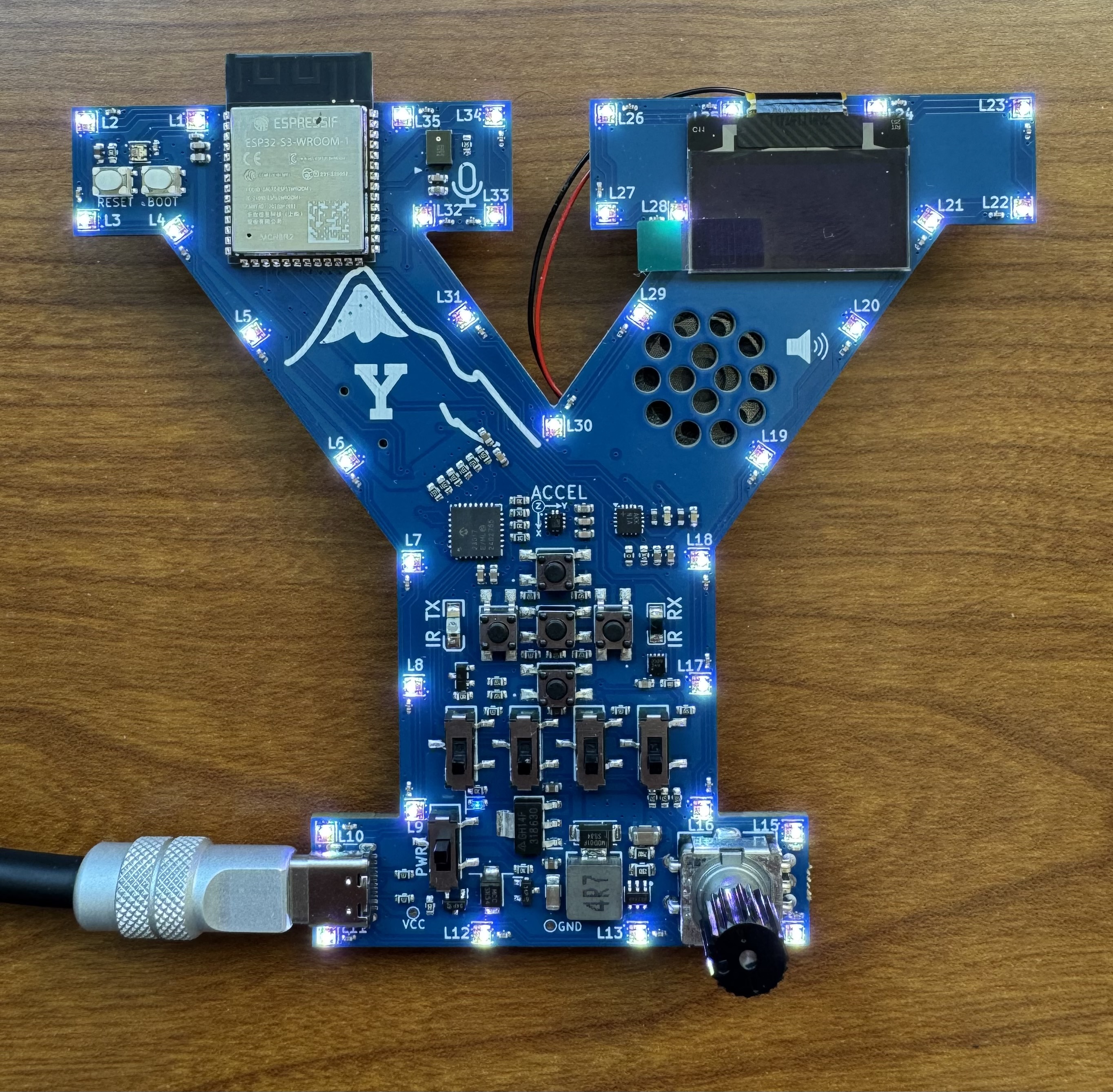What Are Loops?
As a programmer, it’s important to write code that isn’t repetitive; it makes your program much easier to understand and speeds up the pace at which you can work. Loops are a fundamental programming tool we can use to eliminate repetitive code. Similar to functions, they can include as many commands inside them as you’d like. Unlike functions, they are able to repeat those commands for as long as you want them to. We will explore two types of loops: while loops and for loops.
Loops
While Loops
While loops are loops that run the code inside them until a certain condition is met. We can also use while loops to make our code run forever. For example, the following code will make LED 1 on our board blink forever:
while (true) {
Yboard.set_led_color(1, 255, 0, 0);
delay(250);
Yboard.set_led_color(1, 0, 0, 0);
delay(250);
}
More Details
There are a few things to notice about this loop:
- The thing we place inside parenthesis after the
whilekeyword is called the loop condition. The loop condition should be a statement that evaluates to eithertrueorfalse. Because we’ve hard-codedtrueinto this loop, the condition will never change and the loop will run forever. - The commands we want the
whileloop to execute should be placed after the loop condition inside curly braces.
What if we wanted to use a while loop to make the first 10 leds blink one time each, in sequence? We could do something like the following:
int currentLed = 1;
while(currentLed <= 10) {
Yboard.set_led_color(currentLed, 255, 0, 0);
delay(250);
Yboard.set_led_color(currentLed, 0, 0, 0);
currentLed++;
}
This loop has a loop condition that isn’t always true, because we increment the value of currentLed every time it runs using currentLed++;. We want it to run as long as currentLed <= 10 is true. Once currentLed is 11 or larger, the loop won’t run again.
For Loops
A for loop to do the same thing as above looks like the following:
for(int currentLed = 1; currentLed <= 10; currentLed++) {
Yboard.set_led_color(currentLed, 255, 0, 0);
delay(250);
Yboard.set_led_color(currentLed, 0, 0, 0);
}
Seems like a better way of doing things, right?
More Details
Our code to make the first 10 leds blink using a while loop is a little clunky. Did you notice that we had to declare a variable outside of our loop called currentLed to keep track of our condition? And then we had to increment it inside of our loop. That’s a little confusing.
for loops and while loops can do the same things, but for loops are better for running code a certain number of times and while loops are better for running code until a certain condition is met in our program.
Notice the similarities between a for loop and a while loop. We still declare a variable called currentLed, we still have a loop condition that keeps track of whether the loop should run again, and we still increment currentLed every time the loop runs. But, we do all of that on a single line inside the parenthesis. This is a nice way to organize our code and keep track of our variable in one spot.
Examples
The following code will play a song and move the LEDs around the board while the song is playing:
// Make sure you update main.cpp to call this function
// Add your code here:
Yboard.play_notes_background("O4 T180 CCGGAAG2 FFEEDDC2");
int currentLed = 1;
while (Yboard.is_audio_playing()) {
Yboard.set_led_color(currentLed, 255, 0, 0);
delay(250);
Yboard.set_led_color(currentLed, 0, 0, 0);
currentLed++;
if (currentLed > 35) {
currentLed = 1; // Reset to the first LED
}
}
Exploration
Remember to change main.cpp before continuing…
📝 NOTE: You will need to go to
main.cppand change the comments to call the correct activity function:// sound_activity(); // variables_activity(); loop_activity(); // buttons_switches_activity();
-
Use a loop to turn on all the LEDs white.

-
Make all the LEDs blink. On for 500ms then off for 500ms, repeated forever.
- Hint: Try using
forloops inside of awhileloop.
- Hint: Try using
Challenges:
Remember to comment/uncomment the correct function calls…
Remember to comment out the loop_exploration(); call in the loop_activity function and uncomment the correct challenge function:
loop_exploration();
// loop_challenge1();
// loop_challenge2();
// loop_challenge3();
Challenge 1: Copy the code for “Twinkle Twinkle Little Star” from the sound_activity.cpp file and play it on repeat using a loop.
Challenge 2: Play a song of your choice in the background, and then create a loop that will blink an LED until the song is done playing.
Challenge 3: Make a single LED circle around the board forever, you choose the speed. \
Challenge 4: Change the last program to make the LED circle around the other direction. \